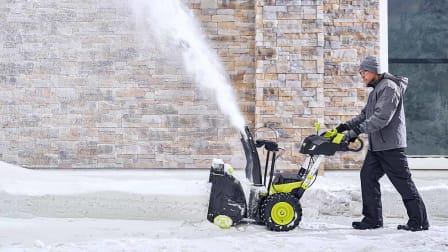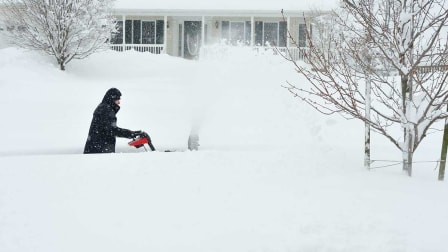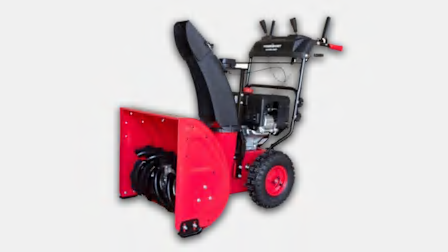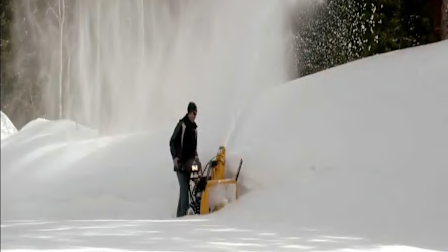How to Use a Snow Blower
Choose one of two paths to snow-clearing success
When you shop through retailer links on our site, we may earn affiliate commissions. 100% of the fees we collect are used to support our nonprofit mission. Learn more.
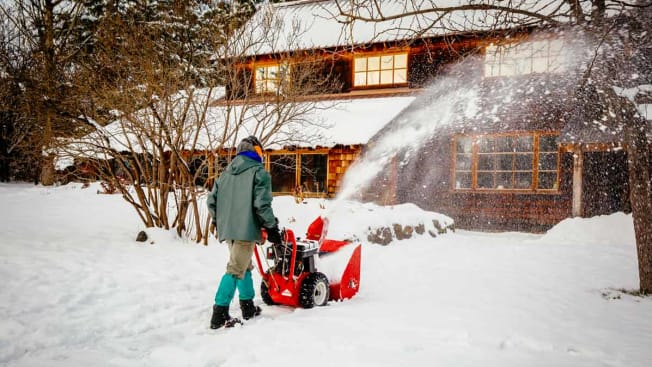
A snow blower is an amazing machine, capable of heaving snow up to 50 feet, depending upon the model. But you need to know how to handle one. Using a snow blower the wrong way can be infuriating and dangerous: You can easily heap snow onto a path you’ve already cleared, or fling a rock or other debris through a window or toward a bystander.
We asked Dave Trezza, who oversees all snow blower testing for Consumer Reports, to show us how to use a snow blower safely and efficiently. Here’s his advice, including his strategy for clearing a path through the snow.
Before You Start
Prep Your Snow Blower
Assuming you stored your gas-powered machine in the off-season with the fuel tank empty, as we recommend, all you need to do is fill it up with gasoline that you have mixed with fuel stabilizer (available at most hardware stores and some gas stations), to protect the fuel system from oxidization that can form between uses.
If fuel from last year is still in the tank, use a siphon to remove it before adding new fuel. Inspect and fill the tires (unless your snow blower has airless wheels or tracks) and check the engine oil.
Pick a Spot to Throw the Snow
If you want to deposit the snow on both sides of the driveway (see illustration below, at left), start by cutting a single swath down the center, then work your way out toward the edges.
If you want all the snow to end up along one edge of the driveway, as in the illustration below, at right, start on the opposite edge and work your way toward the side where you want snow to land. That way, you’ll clear any snow that falls short of its intended resting place as you work your way across. Each time you turn around at one end of the driveway, adjust the discharge chute 180 degrees to keep the snow flying in the right direction.
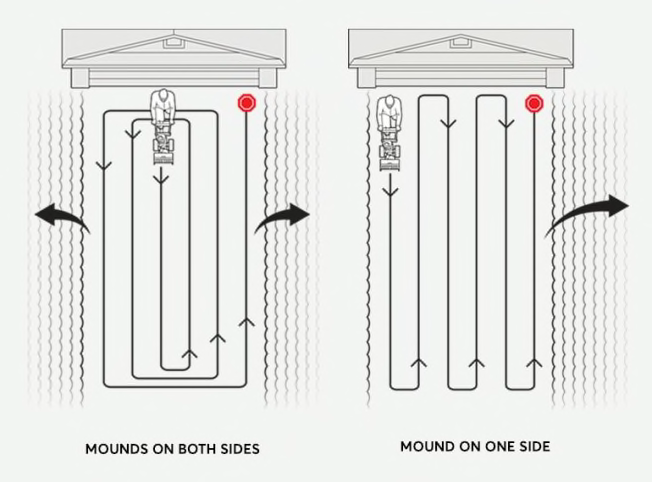
Chris Philpot Chris Philpot
Removing the Plow Pile
Now, what about the huge drift the town plow left at the end of the drive?
Tackle that mess right away, before it melts, refreezes, and becomes a rock-hard glacier.
“Turn your snow blower to the slowest possible speed and work very slowly,” Trezza says. “As you approach the pile, lift up on the handles, forcing the nose of your machine down into the snow, so the auger can dig into the mass rather than just skimming over the top.”
Clear a couple of feet by blowing it into your yard, move over, and repeat until you have an open path.
Repeat each time the plow returns, blocking you in yet again.
Best Single-Stage, Two-Stage, and Three-Stage Snow Blowers
Editor’s Note: This article also appeared in the November 2018 issue of Consumer Reports magazine.





























